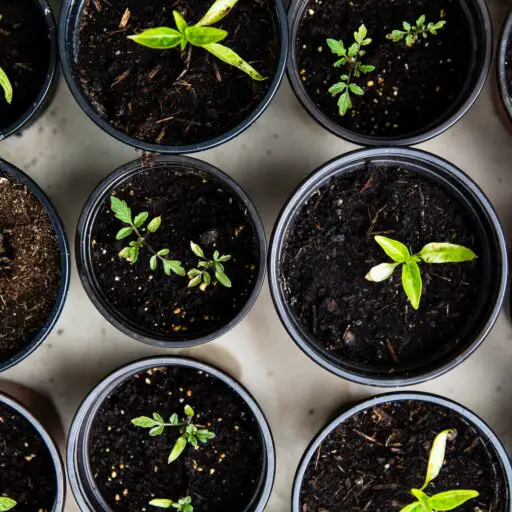Support our educational content for free when you purchase through links on our site. Learn more

Have you ever wandered through a community garden and thought, “This is beautiful, but how do they actually make money?” You’re not alone! Many people are curious about the financial side of these green havens. As we dive into the world of community gardens, you’ll discover that they are not just about growing vegetables; they can also be thriving businesses! From hosting workshops to selling produce, community gardens have found innovative ways to generate income while enriching their communities.
Imagine this: a local garden that not only provides fresh produce but also offers educational workshops, hosts seasonal events, and collaborates with local businesses. Sounds intriguing, right? In this article, we’ll explore 12 surprising strategies that community gardens use to turn their passion for gardening into profit. Whether you’re a seasoned gardener or just starting out, there’s something here for everyone!
Key Takeaways
- Diverse Revenue Streams: Community gardens can generate income through membership fees, plot rentals, and workshops.
- Engagement with Local Businesses: Collaborating with local restaurants and shops can enhance profitability and community ties.
- Funding Opportunities: Grants, crowdfunding, and sponsorships are vital for financial sustainability.
- Workshops and Events: Hosting educational sessions and community events can attract participants and generate revenue.
- Selling Produce: Community Supported Agriculture (CSA) and farmers’ markets are effective ways to sell excess produce.
Ready to dive deeper into the world of community gardens? 👉 Shop gardening supplies and books to kickstart your journey:
- Gardening Tools: Shop on Amazon
- Gardening Books: Shop on Amazon
Let’s get started! 🌍💚
Table of Contents
Quick Tips and Facts
The Evolution of Community Gardens: A Profitable Journey
Did You Know You Could Make a Living from Your Garden?
How to Monetize Your Gardening Skills: Insights from Google
Creative Ways to Cash In on Your Green Thumb
Step One: Document Your Garden’s Journey
Step Two: Host Engaging Gardening Workshops
Step Three: Offer Personalized Gardening Consultations
Step Four: Sell Complementary Products with Your Consultations
Step Five: Build a Thriving Garden Membership Community
Exploring Grants and Funding for Community Gardens
Collaborating with Local Businesses for Mutual Benefits
How to Leverage Social Media for Your Gardening Ventures
Time to Take the First Step Toward Making Gardening Your Career
Conclusion
Recommended Links
FAQ
Reference Links
Quick Tips and Facts
- Community gardens can generate income through membership fees, plot rentals, and workshops. 🌱
- Selling produce at farmers’ markets or through Community Supported Agriculture (CSA) is a popular revenue stream. 🥕
- Grants and donations can significantly support community gardens. Check out our insights on Are Community Gardens Profitable? Discover 10 Surprising Insights for 2024! for more details! 💰
- Engagement with local businesses and organizations can enhance sustainability and profitability. 🤝
- Legal compliance is crucial for operational success, including permits and insurance. 📜
The Evolution of Community Gardens: A Profitable Journey
Community gardens have transformed from simple plots of land for growing vegetables to thriving hubs of community engagement and economic opportunity. They began in the 19th century as a response to urbanization and food scarcity, and today, they serve multiple purposes, including food production, education, and community building.
Key Historical Milestones
- 19th Century: The first community gardens emerged in urban areas to combat food shortages.
- 1930s: The Great Depression saw a rise in victory gardens, emphasizing self-sufficiency.
- 1970s: The community gardening movement gained momentum with a focus on sustainability and local food systems.
- Present Day: Community gardens are recognized for their potential to generate income and foster social connections.
Did You Know You Could Make a Living from Your Garden?
Absolutely! Many gardeners are turning their passion into profit without ever selling a single carrot. The secret lies in leveraging your gardening skills and knowledge. Here’s how you can do it:
Diverse Income Streams
- Consulting: Offer your expertise to help others create their gardens.
- Workshops: Teach others how to garden effectively.
- Memberships: Create a community of garden enthusiasts who pay for exclusive access to resources and events.
How to Monetize Your Gardening Skills: Insights from Google
According to various sources, including Gardenary, there are multiple ways to monetize your gardening skills. Here’s a breakdown of effective strategies:
1. Document Your Garden Journey
- Take Photos and Videos: Capture the growth and changes in your garden. This can be a great way to create content for social media or a blog.
- Create a Blog or Vlog: Share your experiences and tips, and monetize through ads or sponsorships.
2. Host Workshops
- Skill-Based Workshops: Teach specific gardening skills, such as composting or vegetable gardening.
- Pricing: Charge between $30 to $200 per participant, depending on the workshop’s depth and materials provided.
3. Offer Consultations
- Personalized Garden Plans: Assess clients’ spaces and provide tailored recommendations.
- Fee Structure: Start with a base fee of around $100, increasing based on complexity and additional services.
4. Sell Complementary Products
- Garden Supplies: Offer tools, seeds, or organic fertilizers that align with your consultations.
- Markup Strategy: Purchase items at wholesale prices and sell them at retail.
5. Create a Garden Membership
- Exclusive Access: Offer members-only workshops, resources, and community events.
- Engagement: Foster a sense of community and shared learning.
Creative Ways to Cash In on Your Green Thumb
The possibilities are endless! Here are some additional ideas to consider:
Exploring Grants and Funding for Community Gardens
- Local Grants: Many municipalities offer grants for community projects. Research local opportunities!
- Crowdfunding: Platforms like GoFundMe can help raise funds for specific projects or improvements.
Collaborating with Local Businesses for Mutual Benefits
- Partnerships: Work with local restaurants to supply fresh produce or host joint events.
- Sponsorships: Local businesses may sponsor workshops or events in exchange for advertising.
How to Leverage Social Media for Your Gardening Ventures
- Build a Following: Use platforms like Instagram and Facebook to showcase your garden.
- Engagement: Share tips, successes, and challenges to connect with your audience.
Time to Take the First Step Toward Making Gardening Your Career
Now that you have a treasure trove of ideas, it’s time to put them into action! Start by:
- Identifying Your Niche: What do you love most about gardening? Is it teaching, consulting, or growing?
- Building Your Brand: Create a name, logo, and online presence to attract clients.
- Networking: Connect with other gardeners and local businesses to expand your reach.
- Continuous Learning: Stay updated on gardening trends and techniques to offer the best services.
Conclusion

Community gardens are not just about growing food; they’re about growing opportunities! By leveraging your gardening skills, you can create a sustainable income while fostering community ties. Whether through workshops, consulting, or membership programs, the potential is vast. 🌍💚
Recommended Links
- Benefits of Community Gardens
- Community Garden Events
- Community Garden Policies
- Garden Design Ideas
- Garden Maintenance Tips
FAQ

Q: Can community gardens really be profitable?
A: Yes! They can generate income through memberships, plot rentals, and workshops.
Q: What are some common challenges faced by community gardens?
A: Securing land, funding, and maintaining community engagement are key challenges.
Reference Links
- Gardenary: How to Make Money from Your Garden
- Nourish Project: 8 Things to Know About Community Gardens
- Community Gardening: Can a Community Garden Be Profitable?
Conclusion

In conclusion, community gardens are a fantastic opportunity not only to grow fresh produce but also to cultivate a sustainable income stream. By leveraging your gardening skills through workshops, consulting, and community engagement, you can turn your passion into profit. 🌱
Positives:
- Diverse Revenue Streams: From workshops to memberships, there are multiple ways to generate income.
- Community Building: Engaging with your local community fosters connections and support.
- Sustainability: Community gardens promote environmental awareness and healthy living.
Negatives:
- Initial Investment: There may be upfront costs for materials, marketing, and permits.
- Time Commitment: Building a successful community garden requires dedication and time.
Overall, if you’re passionate about gardening and community engagement, we highly recommend diving into the world of community gardens! 🌍💚
Recommended Links
-
👉 Shop Gardening Books on Amazon:
-
Gardening Tools and Supplies:
- Gardener’s Supply Company: Gardener’s Supply
- Burpee Seeds: Burpee
FAQ

What are the most profitable crops to grow in a community garden?
Top Choices for Profitability
- Herbs: Basil, cilantro, and mint are high-value crops that require minimal space and can be sold fresh or dried.
- Tomatoes: A favorite among consumers, they can be sold at farmers’ markets or to local restaurants.
- Peppers: Both sweet and hot varieties are popular and can yield a good return.
- Leafy Greens: Spinach and kale are in demand for their health benefits and can be harvested multiple times.
By focusing on these crops, community gardens can maximize their profitability while meeting local demand.
Read more about “How Do Community Gardens Work? 🌱 Discover 10 Essential Insights for 2024!”
How can community gardens generate revenue through events and workshops?
Engaging the Community
- Workshops: Offer classes on gardening techniques, composting, or cooking with fresh produce. Charge a fee for attendance.
- Events: Host seasonal festivals or open garden days where attendees can pay for activities, food, and produce.
- Collaborations: Partner with local chefs for cooking demonstrations, charging for participation.
These events not only generate revenue but also strengthen community ties and promote the garden.
What are the different business models for community gardens to sustain themselves financially?
Exploring Business Models
- Membership Fees: Charge a nominal fee for individuals or families to join and access garden plots.
- Plot Rentals: Rent out individual plots to community members for personal gardening.
- Produce Sales: Sell excess produce at local markets or through CSA programs.
- Workshops and Classes: Generate income through educational offerings.
Each model can be tailored to fit the community’s needs and preferences, ensuring financial sustainability.
How can community gardens secure funding and grants to support their operations and growth?
Funding Strategies
- Local Grants: Research grants offered by municipalities or non-profits aimed at community development and sustainability.
- Crowdfunding: Utilize platforms like GoFundMe or Kickstarter to raise funds for specific projects.
- Sponsorships: Approach local businesses for sponsorship in exchange for advertising opportunities.
- Fundraising Events: Host events like bake sales or plant sales to raise money directly from the community.
By diversifying funding sources, community gardens can ensure ongoing support for their initiatives.

